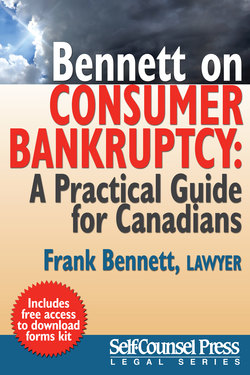Читать книгу Bennett on Consumer Bankruptcy - Frank Bennett - Страница 31
На сайте Литреса книга снята с продажи.
4. Attend the First Meeting of Creditors
ОглавлениеIn consumer bankruptcies, there is not likely to be a meeting of creditors unless requested. Within 30 days of the bankruptcy, the Official Receiver or creditors having at least 25 percent in value of the proven claims can request a meeting of creditors. If a creditors’ meeting is requested, the trustee must send a notice of bankruptcy and notice of impending automatic discharge for first-time bankrupts to creditors. The notice must indicate the amount of surplus income that the bankrupt is required to pay the estate.
If a meeting is requested, it must be held within 21 days after being called. If a meeting is called, it is usually because the consumer debtor owes substantial money to creditors, or credit card issuers suspect something improper or illegal.
If the Official Receiver or creditors wish to call a meeting, the trustee in bankruptcy must notify all the creditors of the date, time, and location for the first meeting of creditors in the bankruptcy estate. The Official Receiver sets the date and time and usually confers with the trustee in doing this.
The trustee sends a notice of the first meeting with the statement of affairs and a summary list of creditors to all the creditors, advising them of the date, time, and location of the first meeting of creditors, and advising them that if they wish to come and vote, they must first file a proof of claim before the meeting begins. If the trustee does not accept the proof of claim, the creditor will not be permitted to vote.
While not usual for consumer bankruptcies, the Official Receiver’s examination of the bankrupt is usually held the day before or during the morning before the first meeting of creditors. At the first meeting of creditors (and usually there is only one as second or subsequent meetings can become expensive), the Official Receiver and trustee review a number of matters including the results of the examination and then the trustee obtains directions from the creditors. This is covered in more detail in Chapter 5.
